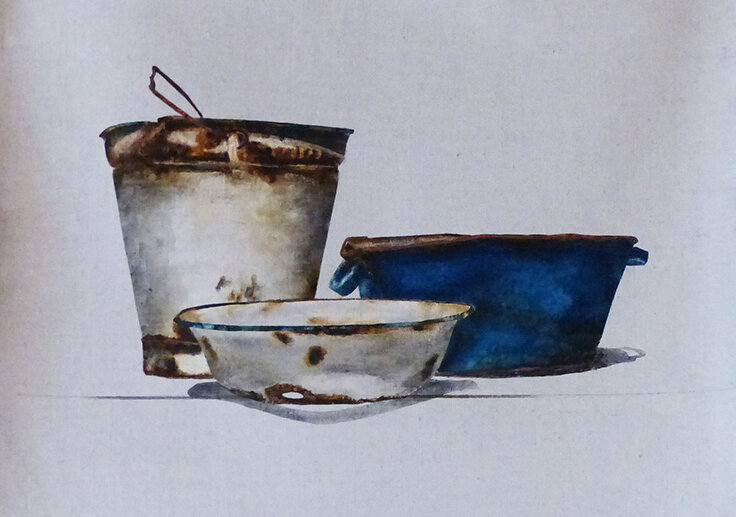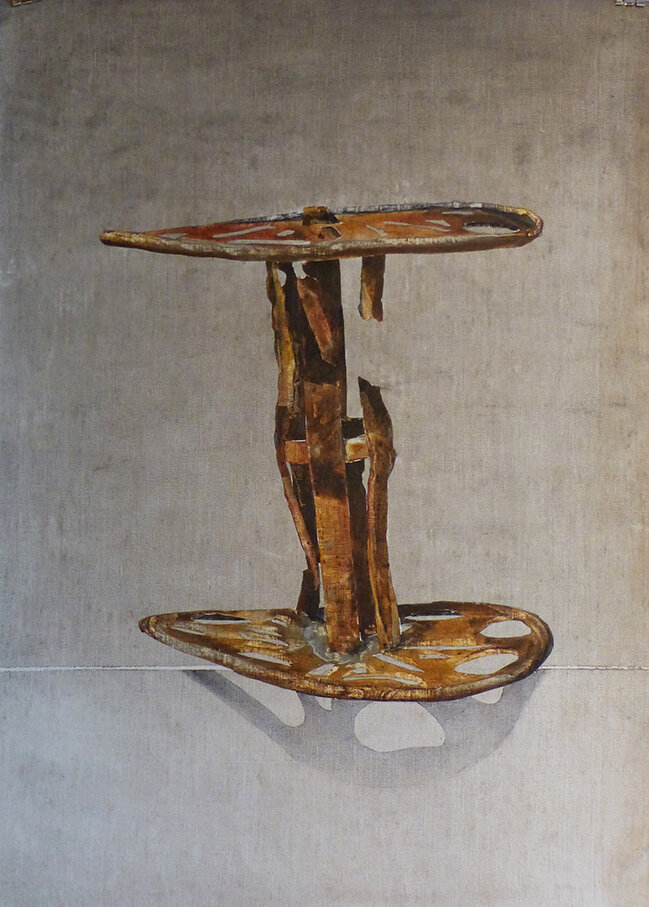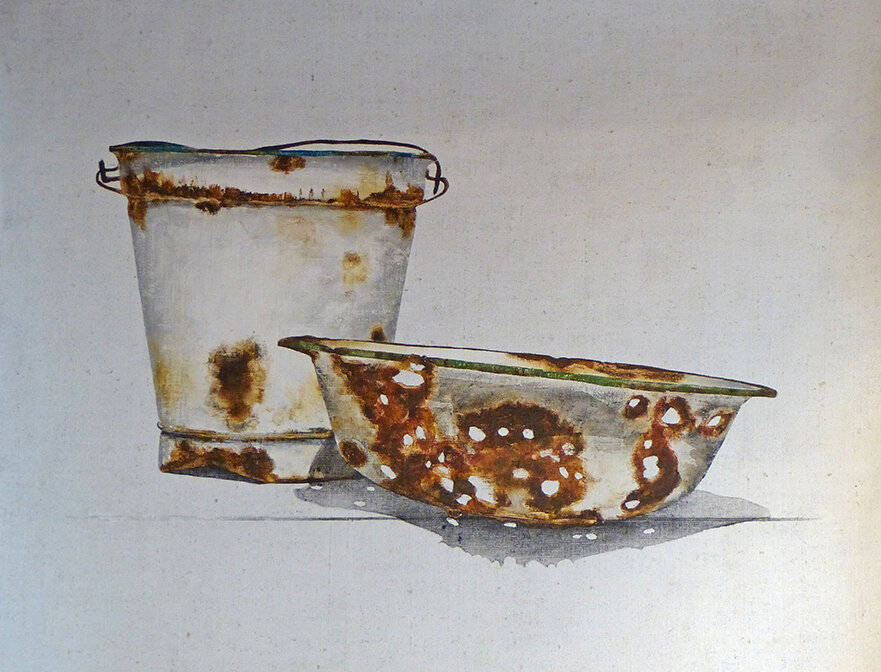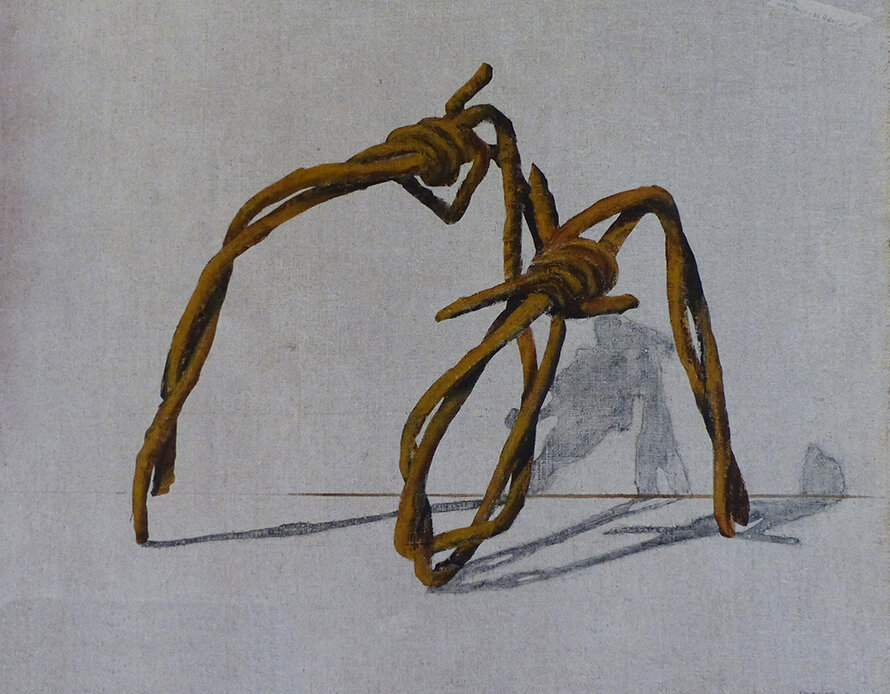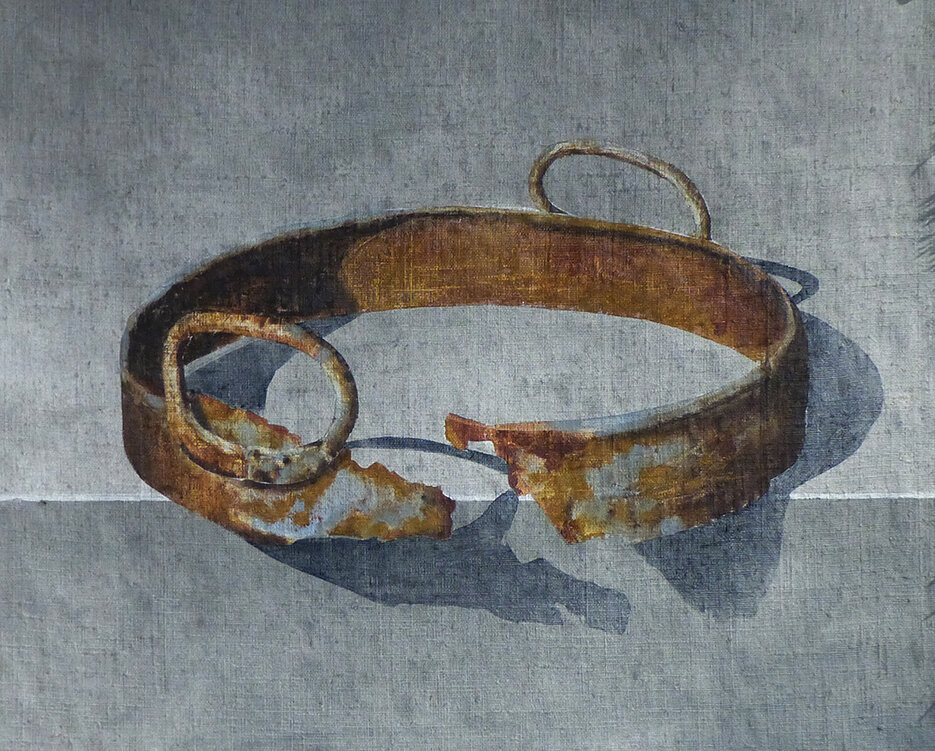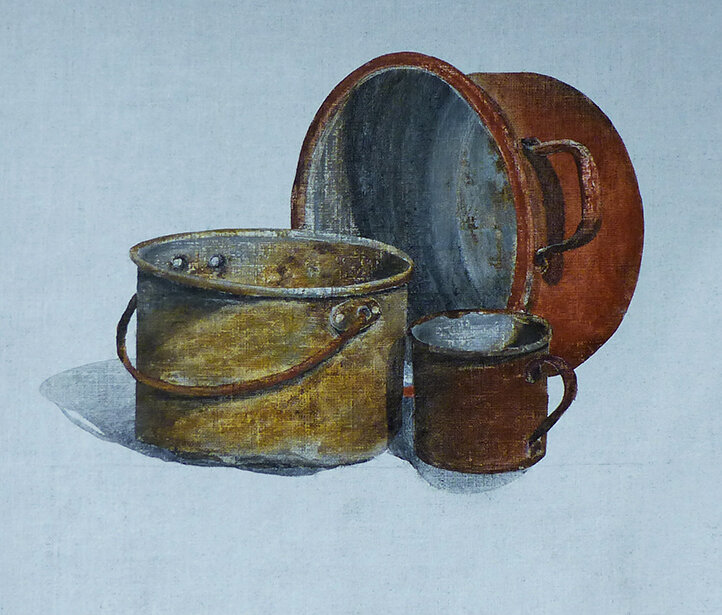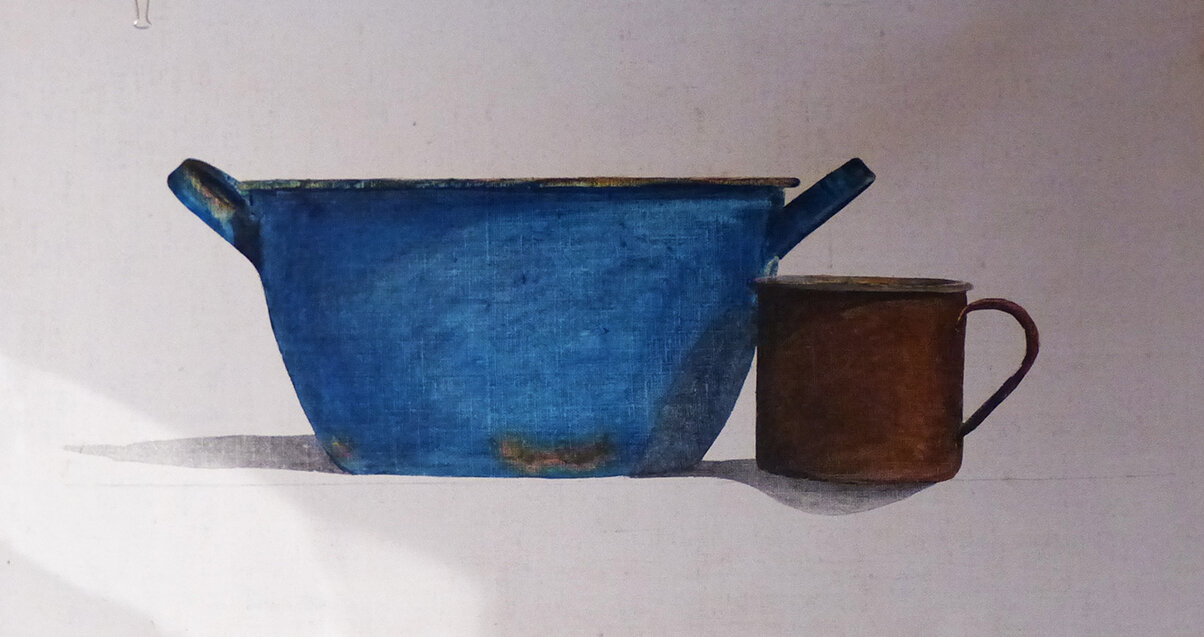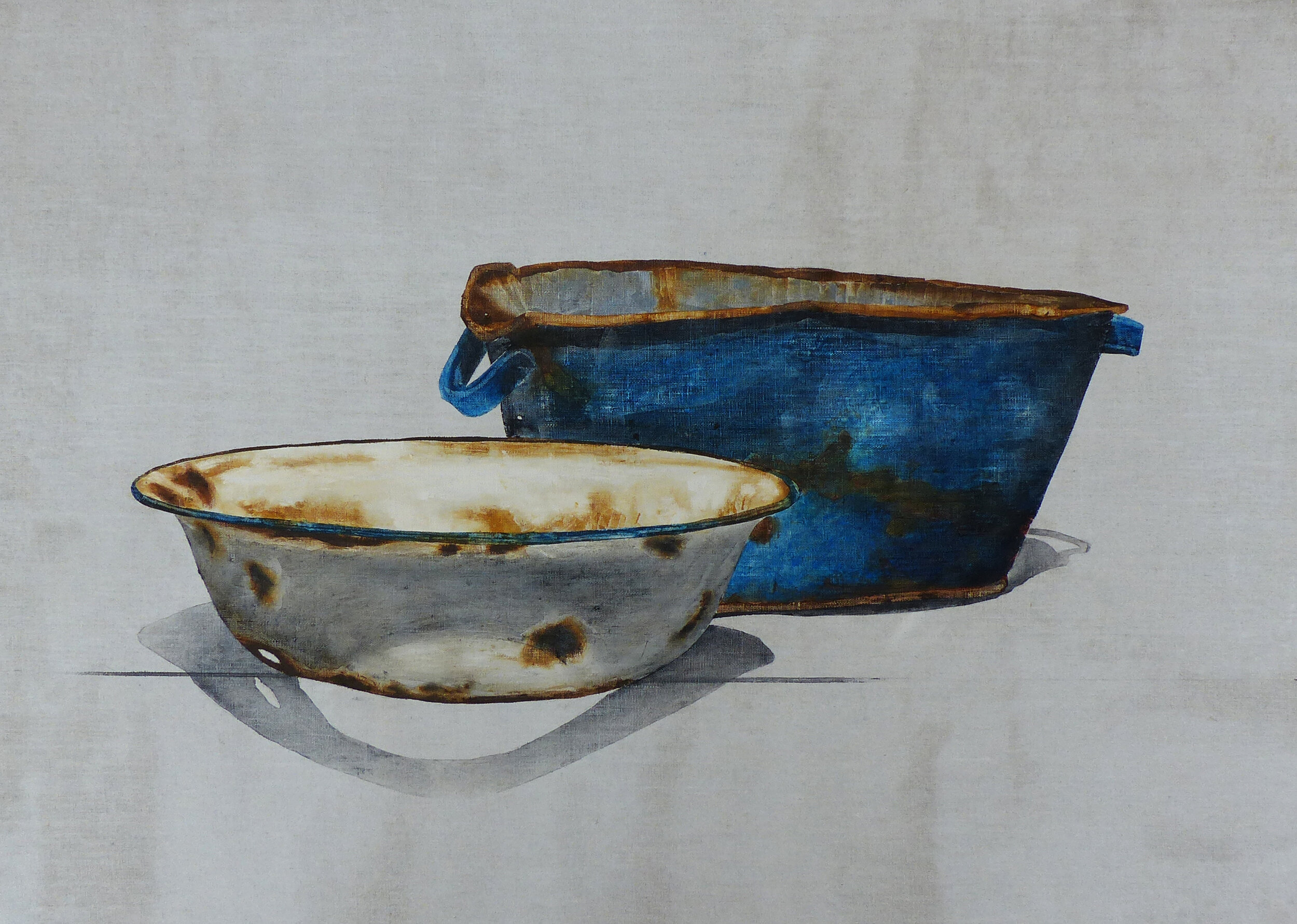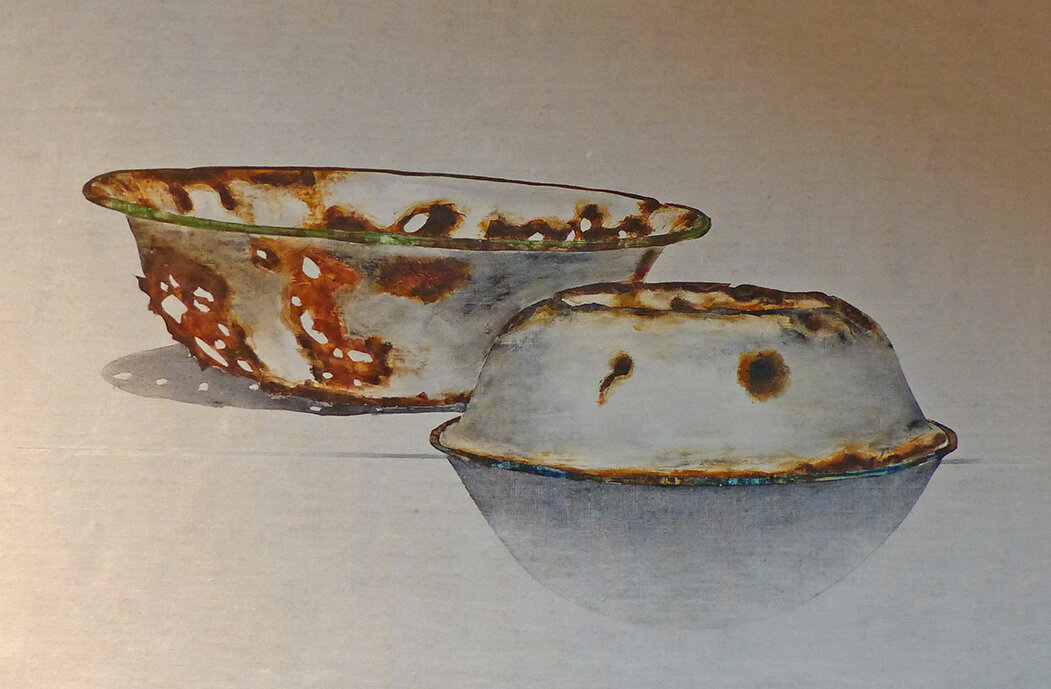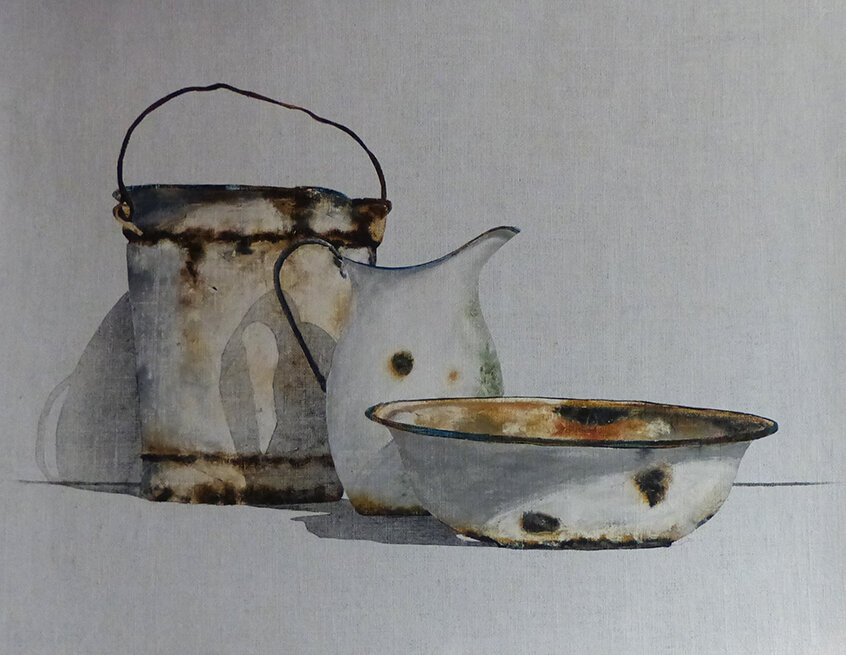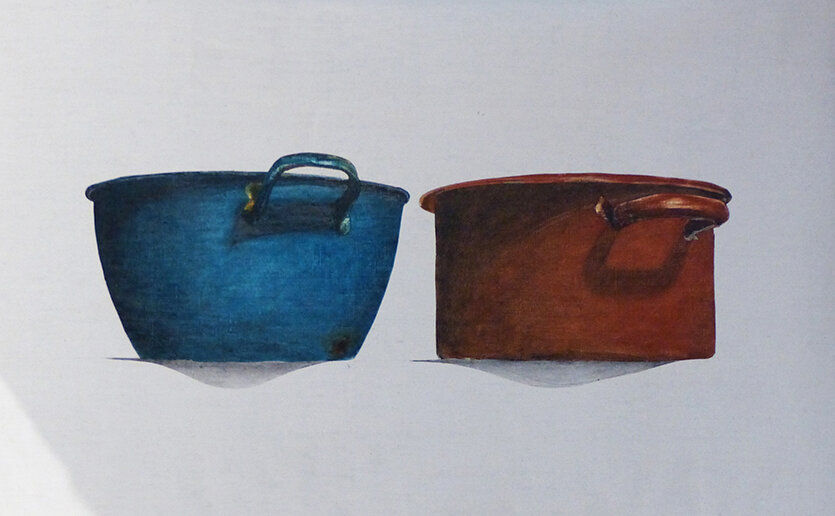MAAN LUUT / BONES OF THE EARTH
OIL PAINTINGS 2020
GERMAN AND SOVIET TROOPS OCCUPIED FINLAND DURING WORLD WAR II
AND LEFT BEHIND REMNANTS OF THE WAR.
THOSE REMAINS DO NOT MERGE WITH THE EARTH AND FROM TIME TO TIME
THEY SPRING FROM THE GROUND.
……………………………….
“WE ALWAYS DIE FOR OUR COUNTRY.
WHEN ONE HAS LIVED IN IT WORTHily, ACTIVEly, WISEly, IT IS FOR HIS COUNTRY ALSO THAT ONE DIES.
THE MURDERED ARE NOT QUIET UNDERGROUND, PRIAM. THEY DO NOT MERGE IN IT FOR REST AND ETERNAL ACCOMMODATION.
THEY DO NOT BECOME SOIL, THE EARTH’S FLESH.
WHEN YOU FIND A HUMAN SKELETON ON THE GROUND, THERE IS ALWAYS A SWORD NEAR IT. IT’S A BONE OF THE EARTH, A STERILE BONE.
It IS A WARRIOR”
“THE TROJAN WAR WILL NOT TAKE PLACE”
JEAN GIRAUDOUX, 1935
100% of the sales value of the paintings
Maan Luut
Bones of the Earth
will be donated to the project led by
Archaeologist Jan Fast
“ Hanko 1941
Finding the Fallen
of the Second World War Battles of the
Hanko Front”
Every soldier
despite of nationality
deserves a name and
a decent grave
The Hanko 1941 project locates, documents and researches the battlegrounds in order to find remains of the fallen and identify the remains. The multidisciplinary research work is done following strict scientific and ethic guidelines and in close co-operation with the Embassy of the Russian Federation in Finland.
Hanko 1941 - Finding the Fallen of the Second World War Battles of the Hanko Front
The scarred landscapes of the Second World War battlefields of the Hanko front still bear witness of the horrors and all engulfing, destructive power of war.
The memory of the battles is visible from the air, on the ground surface and below it, deep underground.
Here an unknown number of fallen soldiers still lay forever missed by family and relatives far away.
The main objective of the project is to give the fallen soldiers a decent grave where they can be remembered and bring closure to relatives of the fallen.
So far eight soldiers who died in the battles of the Hanko front have been found by the project. Seven of these were reburied at the Russian war cemetery in Täktom in September 2019.
The destructive battles on the Hanko front between Finland, Nazi Germany and the Soviet ended on the 2nd of December 1941.
Much time has passed since the guns fell silent and it is now possible to study the conflict objectively, from both sides of the front.
By combining art, pedagogic work and scientific conflict archaeology research the Hanko 1941 project communicates war history in an objective way especially to the young and on both sides of the state border.

